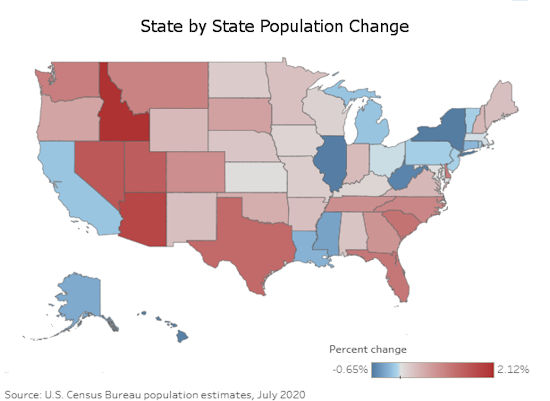
Who could imagine that the seeds of the next housing crisis would be planted by the CDC during a pandemic? But that is exactly what happened. On September 4, 2020… well past the peak of COVID cases, the CDC unilaterally decided that landlords shouldn’t be allowed to evict tenants for non-payment of rent because a bunch of homeless people milling around could spread the disease.
Here is the summary of the CDC edict from the Federal Register:
The Centers for Disease Control and Prevention (CDC), located within the Department of Health and Human Services (HHS) announces the issuance of an Order under Section 361 of the Public Health Service Act to temporarily halt residential evictions to prevent the further spread of COVID-19.
And surprisingly the Supreme Court somehow allowed the CDC to do this. The CDC predicated its edict on the 1944 Public Health Service Act, which authorizes regulations “necessary to prevent the introduction, transmission or spread of communicable diseases from foreign countries into the states or possessions, or from one state or possession into any other” international and interstate spread of communicable diseases. Although Justice Kavanaugh acknowledged that the CDC’s edict was unlawful, he still agreed with the court majority to leave the rent moratorium in place.
On the other hand, the Heritage Foundation stated:
Examples listed in the Public Health Service Act include: “inspection, fumigation, disinfection, sanitation, pest extermination, destruction of animals or articles found to be so infected or contaminated as to be sources of dangerous infection to human beings, and other measures.”
This eviction moratorium falls far outside the congressionally authorized CDC regulations—and is thus unlawful.
Legal scholars at The Heritage Foundation explain:
A basic canon of statutory construction—known as the ‘ejusdem generis’ (Latin for ‘of the same kind’) rule—is that when a broad, vague term follows a list of specifics, that term must refer only to the same sort of things listed before it. Nationwide eviction bans are nothing like the localized, limited actions of inspecting, fumigating, or disinfecting specific buildings or neighborhoods or exterminating pests.
Unintended Consequences:
Like all government edicts, this tiny edict could create a cascade of problems. This simple sentence has already affected millions of people’s lives. Landlords could no longer enforce rent payments on residential tenants through the threat of eviction. And if you can’t be evicted, many tenants figured, why pay rent? But the edict didn’t say that you don’t owe rent. Quite the opposite, the order specifically said that it doesn’t preclude “the charging or collecting of fees, penalties, or interest as a result of the failure to pay rent or other housing payment on a timely basis.” So you still owe it, but you just couldn’t be evicted for not paying it. And if a landlord tried to evict you they could be fined up to $500,000 and even jailed.
Congress Steps In
Congress realized that this CDC edict could cause some problems for landlords. After all, landlords often operate on thin margins and still need to make their mortgage payments too. So Congress came to the “rescue” to fix the problem CDC created. They created a $46 billion rental aid package. But between December 2020 and the end of May 2021, “only” $1.5 billion has been distributed, possibly because most renters didn’t even know it was available (or didn’t care because they couldn’t be evicted anyway).
What’s the Catch?
But there was a catch for the tenants as well. The moratorium on evictions was set to end on December 1, 2020. Of course, like all government programs, this one took on a life of its own and the moratorium has been extended three more times and is now set to expire at the end of July. So what happens when the moratorium does finally end? Well, all that back rent becomes due and we could see a rash of evictions. After all, if you couldn’t (or just didn’t feel like it) paying one month’s rent, what are the chances that you can now pay six or nine month’s rent?
What Happens Now?
Estimates have it that as many as 1.2 million households could be evicted for nonpayment of rent for the last 6 months. This could result in a rush to collect the rest of that $46 billion, which could overwhelm the system as the clock ticks down. But in addition to that, other factors are weighing on the housing industry.
A massive shift is taking place as homeowners are fleeing Blue states and flocking to Red states causing disruptions in both housing markets. According to the U.S. Census Bureau, Sixteen states lost population between 2019 and mid-2020 with the dark blue states on the map below showing the greatest losses and the dark red states showing the greatest gains. New York and California, had some of the biggest drops between mid-2019 and mid-2020, with New York losing about 126,000 people and California losing almost 70,000. The big gainers were Texas, up about 374,000 people for the year, and Florida, up about 241,000, plus the figures don’t even take into consideration the coronavirus spikes that happened in those states after July 2020.

Another Supreme Court decision has allowed the Biden Administration to fire the Trump-appointed head of the Federal Housing Finance Authority and replace him with someone who will override the limits which had been put into place on risky loans, to prevent another 2008 disaster. Thus, we could see a spike in reckless loans followed by another housing explosion and a subsequent meltdown.
The decrease in population in the blue states could be offset by the massive influx of illegal aliens that has so far accompanied the Biden administration’s new policies. According to the NY Post: April saw the most illegal immigrants stopped at the border in 21 years. This increase in the population of primarily uneducated, unskilled labor could put additional stress on social programs and low-income housing.
You might also like:

